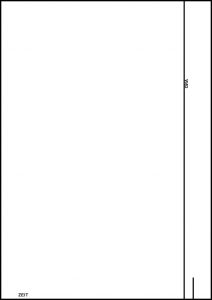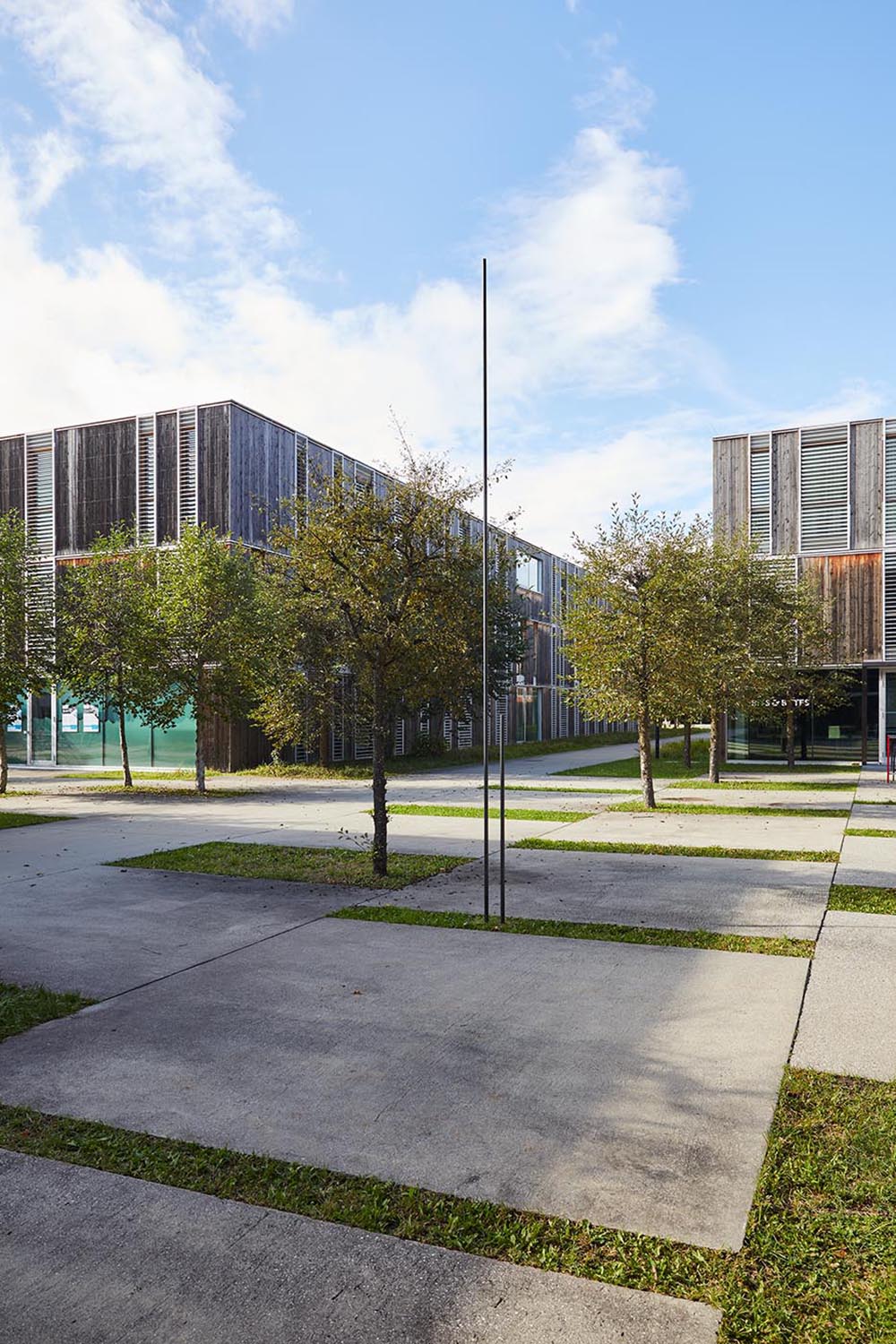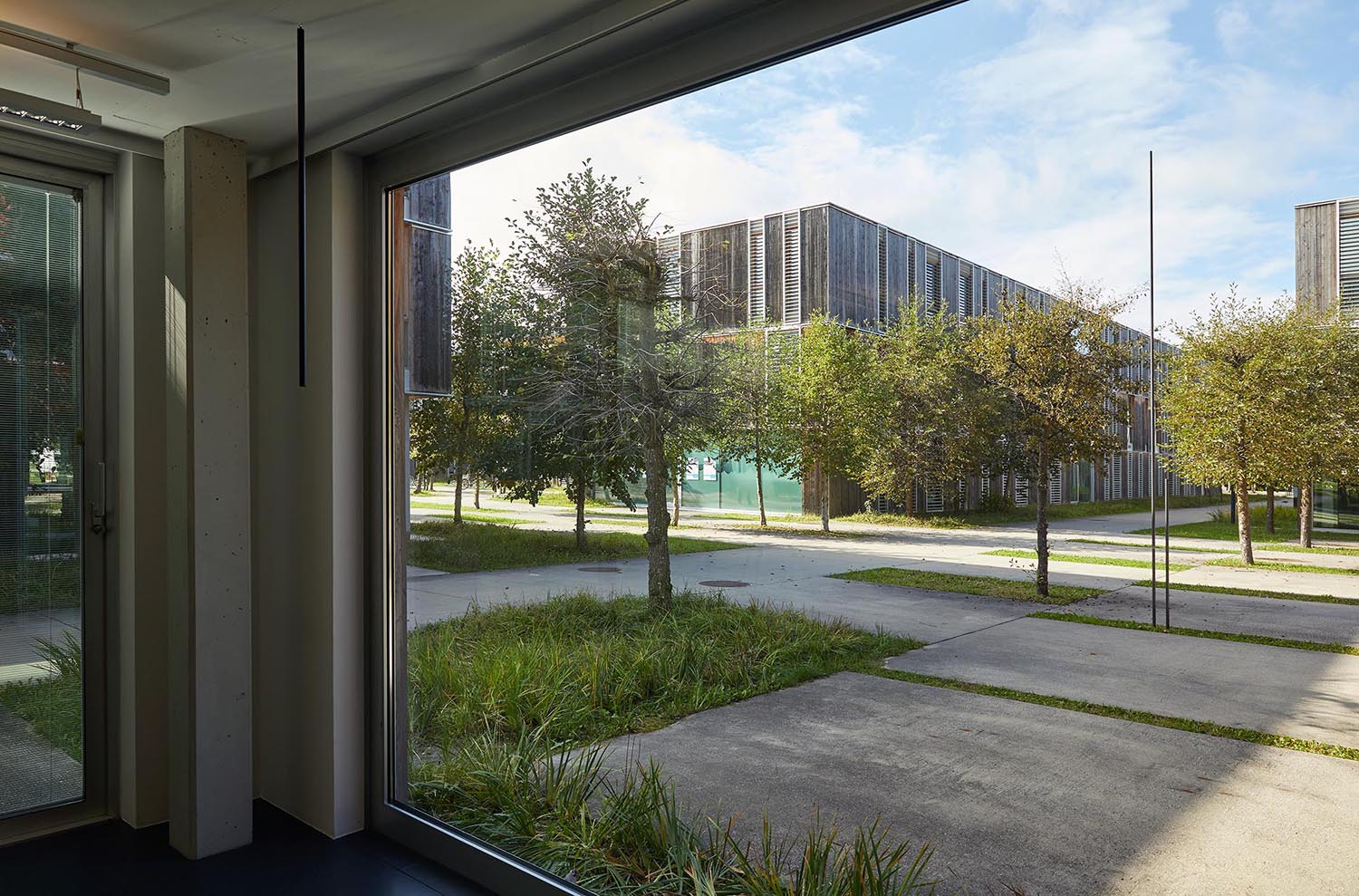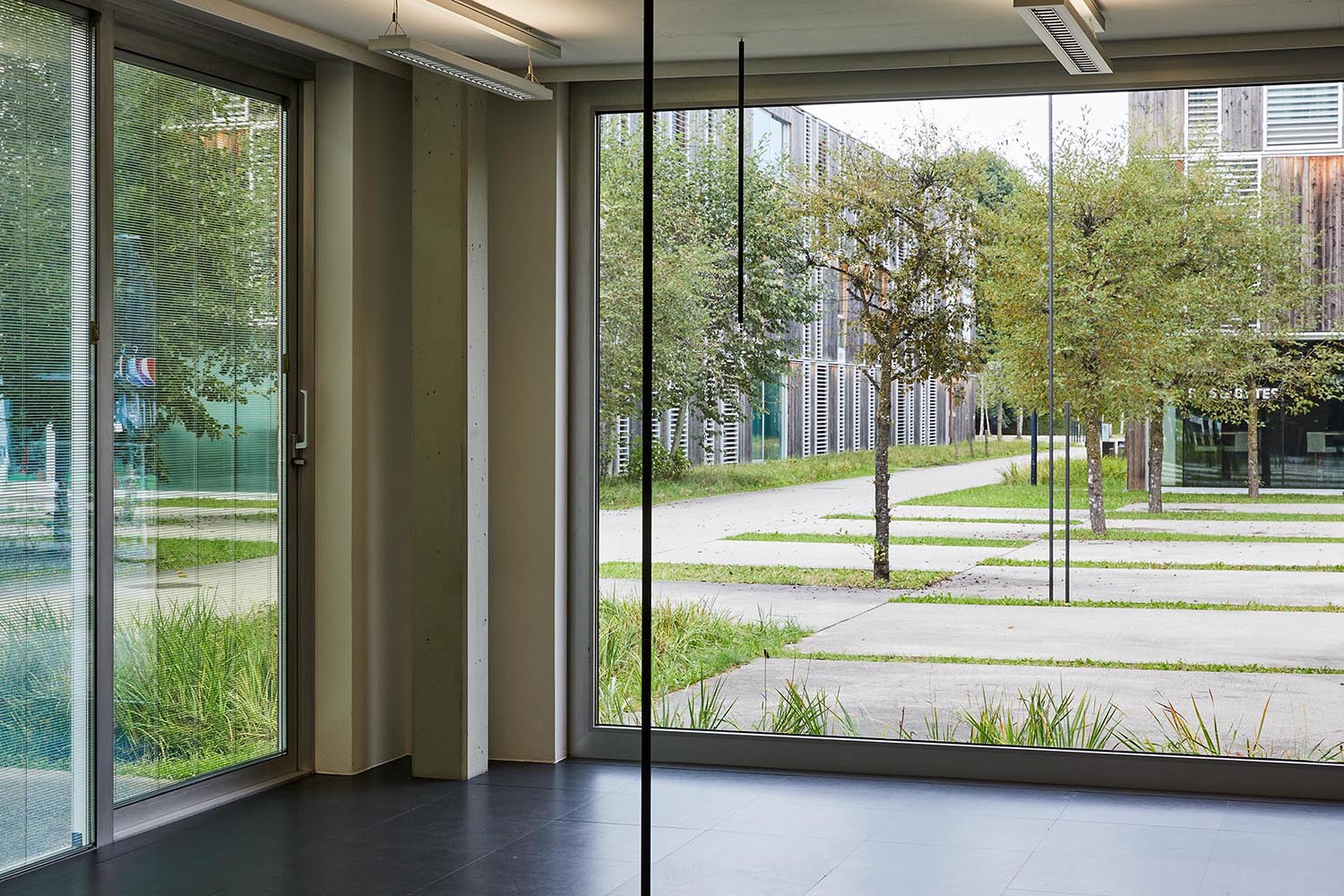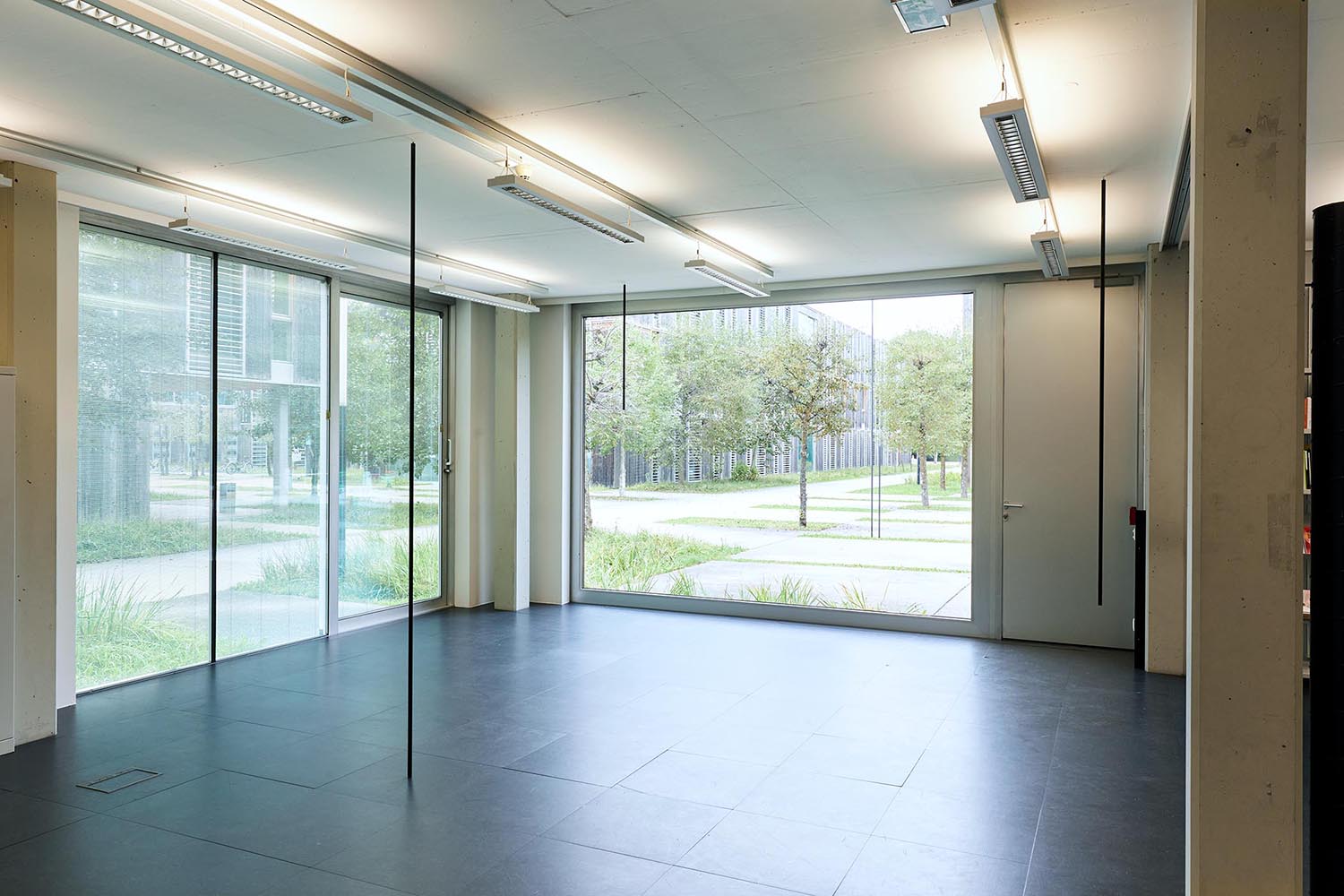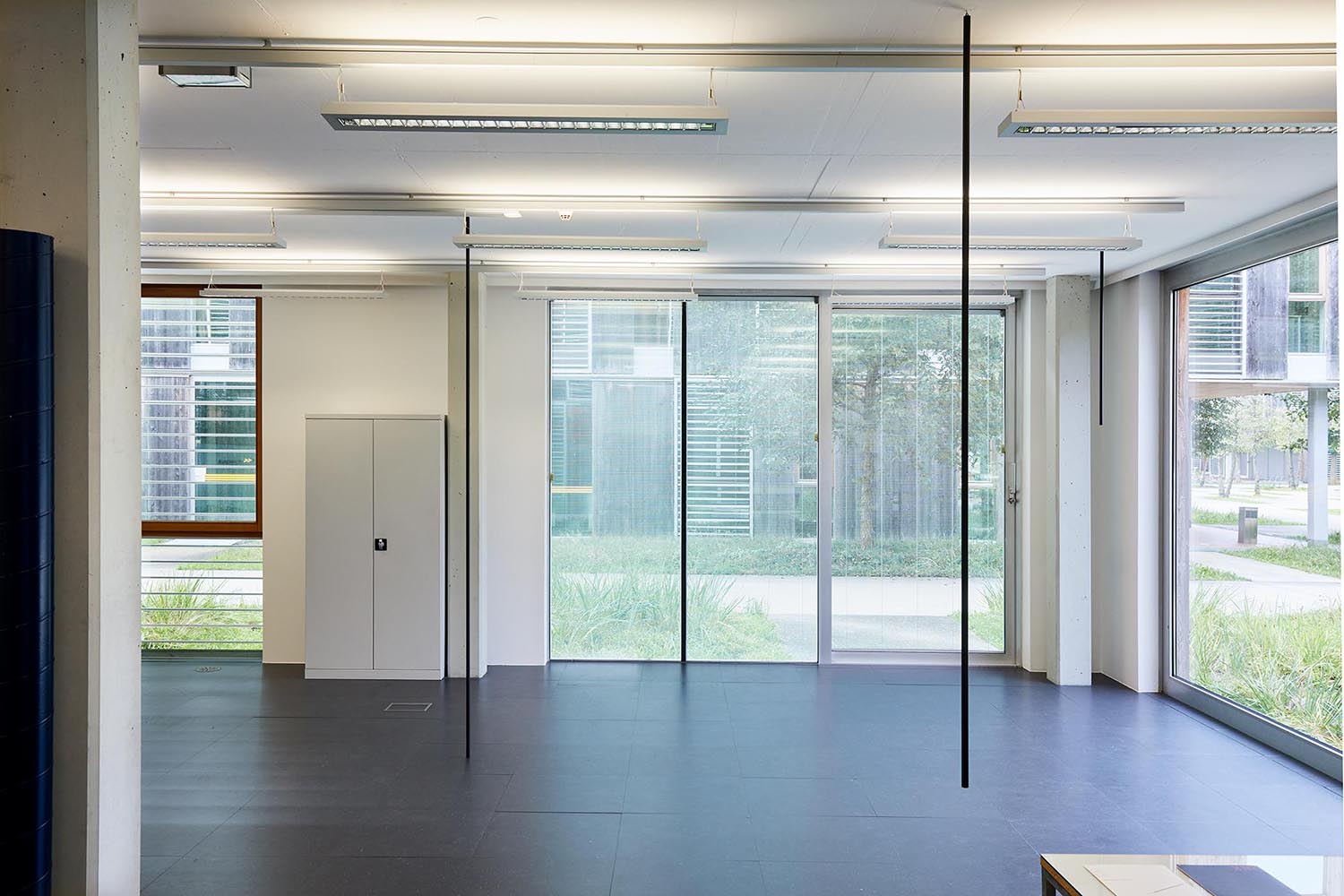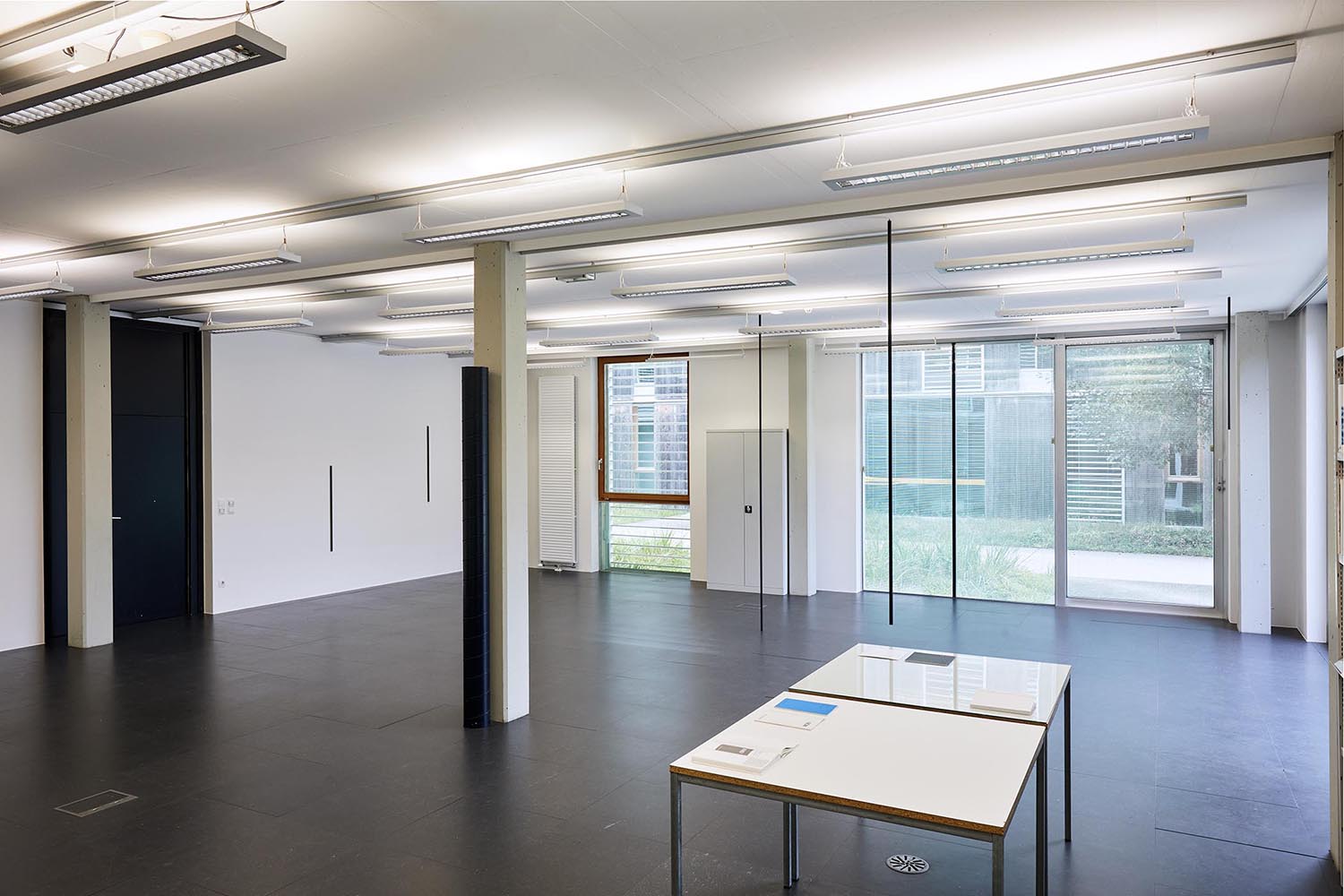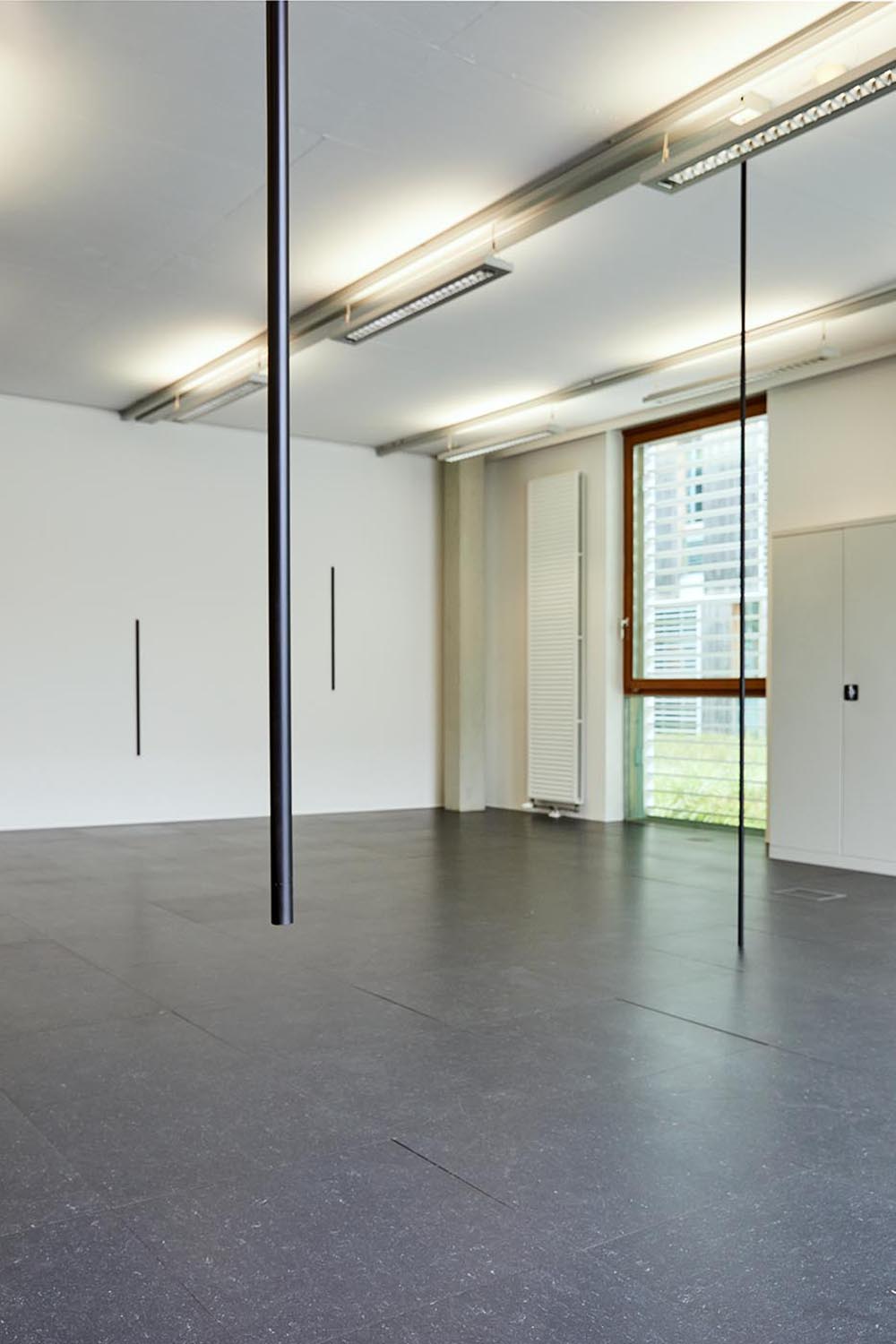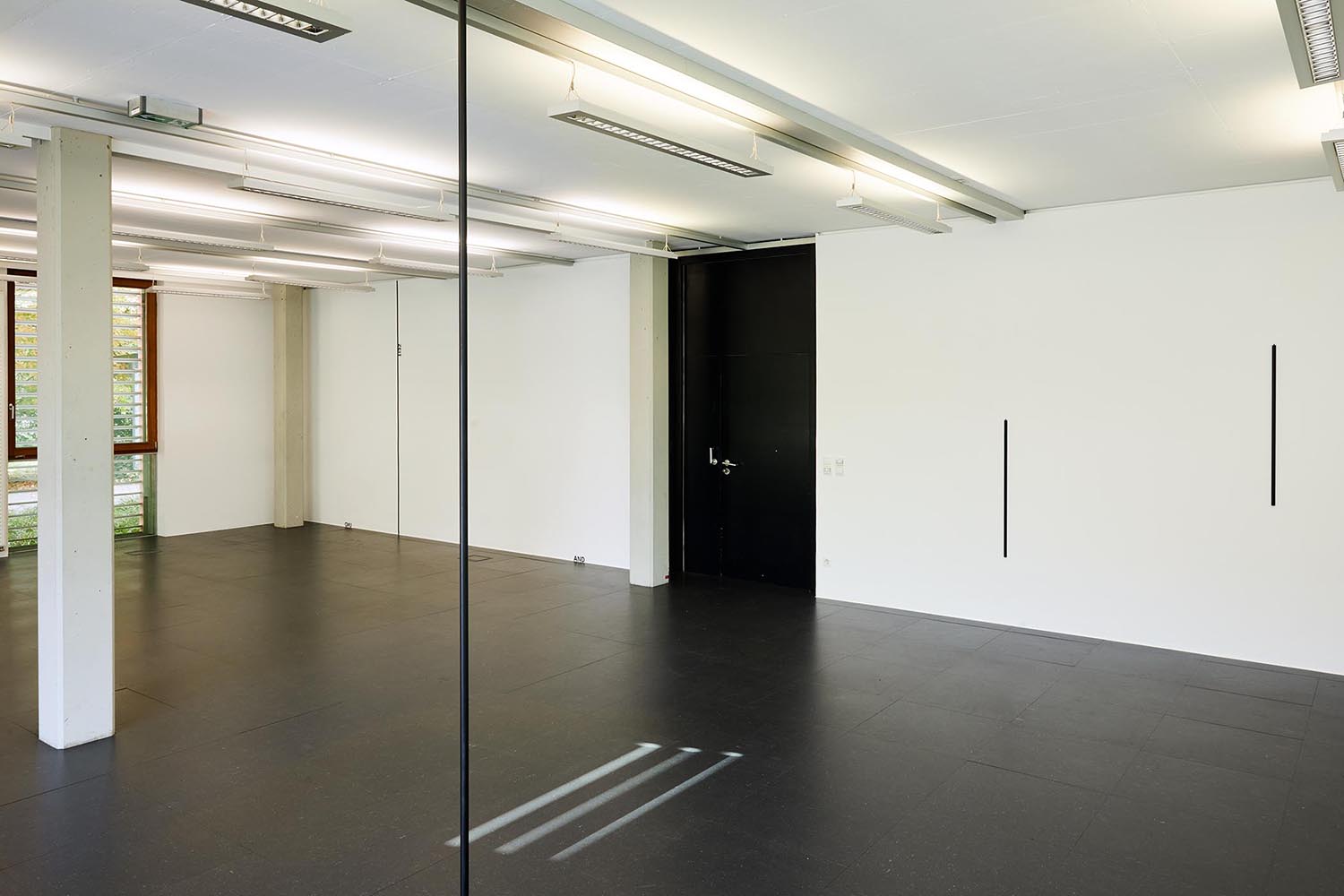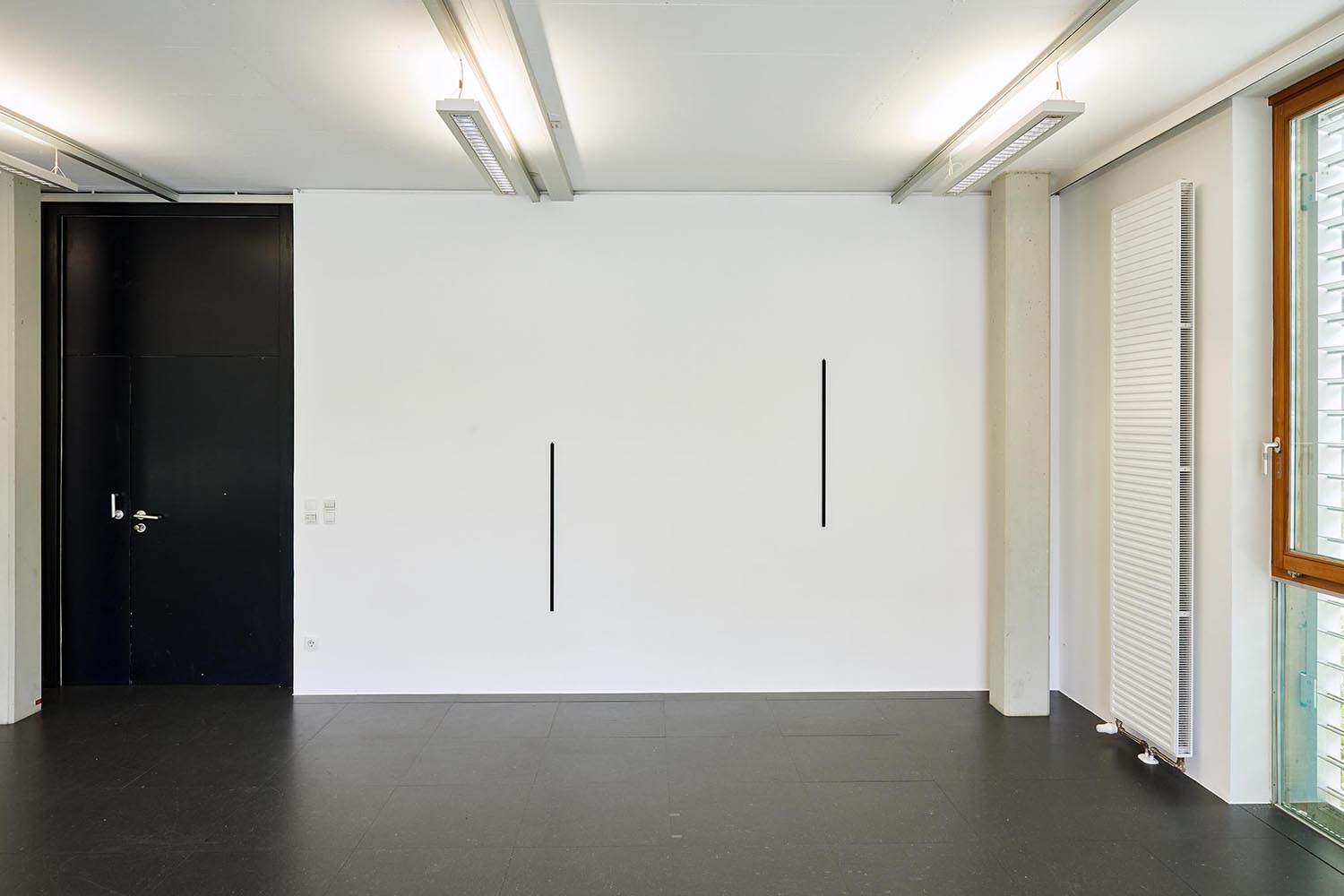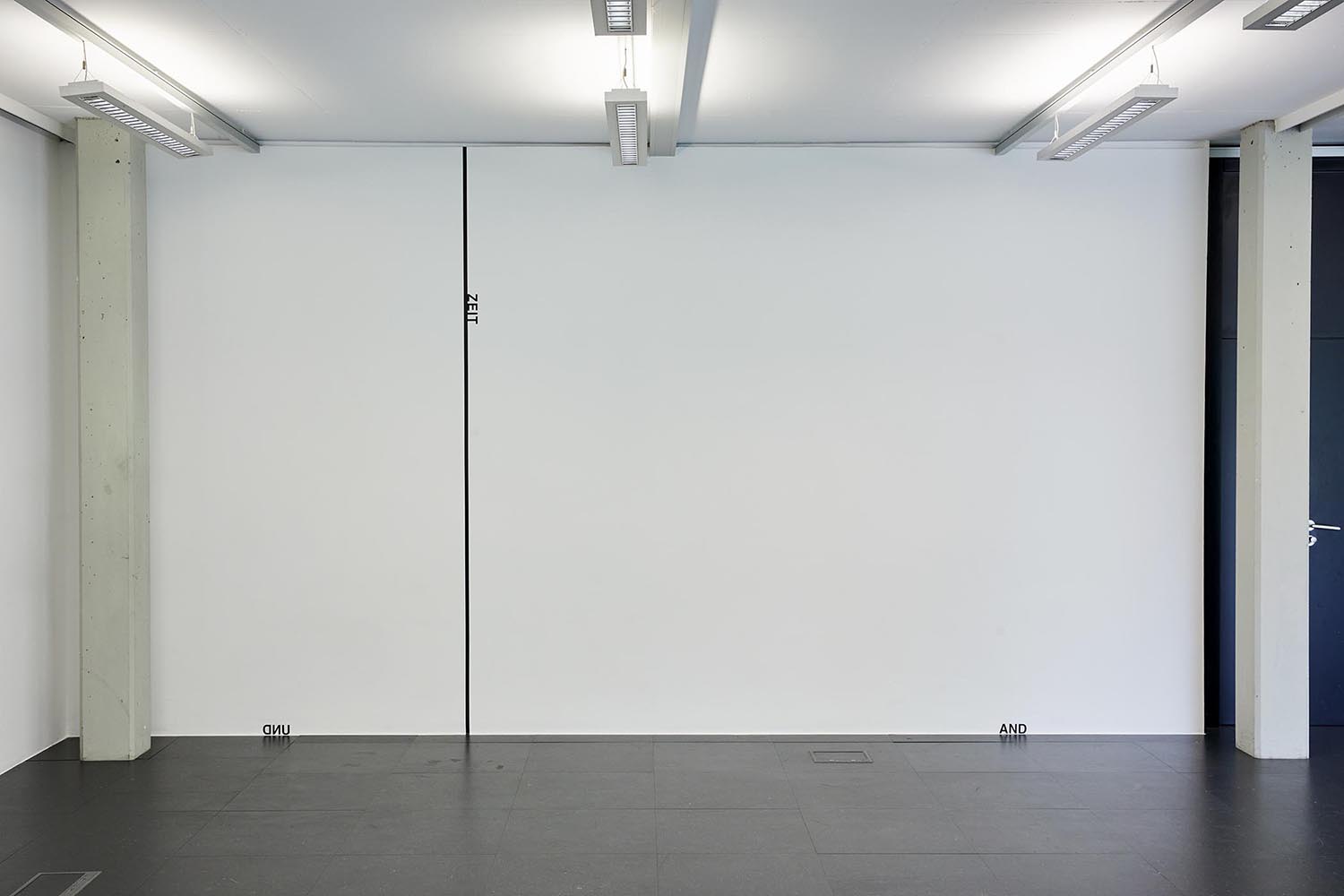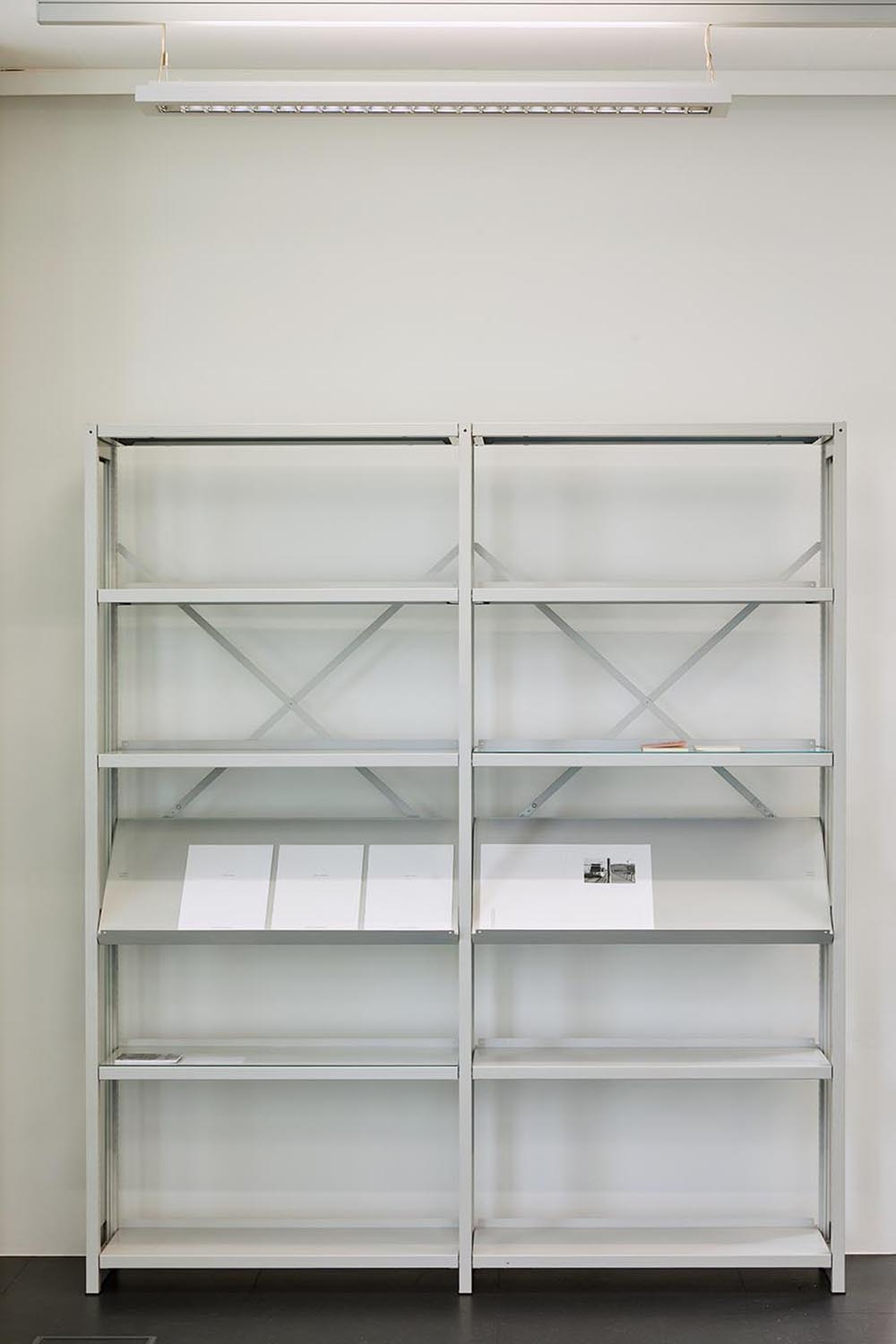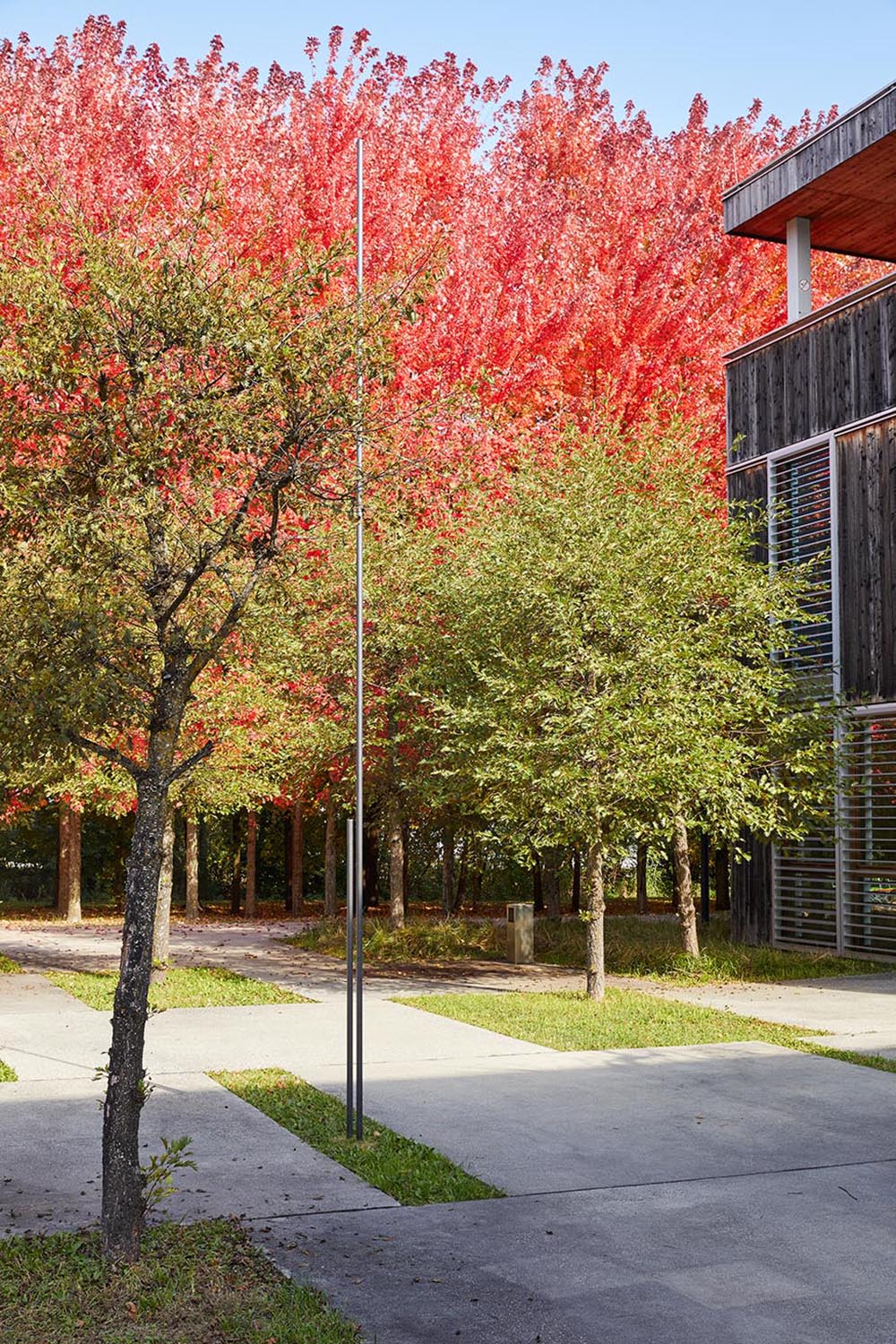Opening, October 8, 2020, 5:30 – 7:30 pm
Exhibition, October 9, 2020 – November 6, 2020
Peter Downsbrough’s artistic practice focuses on subtle moments in the production of connections. His minimalist works relate linguistic, typographical, and graphic elements to the architecture of the respective exhibition space, creating geometries and rhythms that not only influence the perception of the space but also its underlying conditions and structure. Conjunctions such as AND, BUT, AS—syntactic tools that otherwise create connections between words, clauses, or entire sentences—in combination with prepositions, verbs, or other word classes, often form the departure point to make corners, edges, openings, closures, transparent and opaque surfaces as well as spatial transitions speak—both literally and figuratively.
Downsbrough’s formal language, which the artist has been honing since the 1960s, becomes even more incisive in the reduction of his work to black letters and lines. However, the artist not only employs these fundamental methodical elements in architectural contexts but also in public space, drawings, models, photographs, videos, and not least artist’s books. “Quite often people accuse me of being a minimalist,” states the artist about the way his creative work is received. Peter Downsbrough’s answer: “No, no. I’m not a minimalist at all. I’m a maximalist, ’cause I can’t do more than I do.”1
For Kunstraum Lakeside, Peter Downsbrough has developed a new setting, which responds to the exhibition space but also to the surroundings of the technology park, too. At the center of the project is the large window of the Kunstraum, which allows visitors to view the drawings of the artist both from the inside and the outside, virtually framed by the architecture, while establishing a relationship between them at the same time. The extensive, transparent glass surface serves as an interface—an architectural seam between art and the reflections upon in it within and technology and knowledge production without. Two Pipes, a new version of a work by Downsbrough from 1970, consists of two parallel gas pipes, clearly unequal in length, positioned outside at a distance of just a few centimeters apart. Anchored in the ground in front of the Kunstraum, one of the metal elements soars into the sky, while the size of the second element has a human scale. Both cut through the view of passersby to their environment like two lines drawn on a sheet of paper. When observers engage with this reciprocity between artwork and surroundings, they are guided by Two Pipes into the exhibition space where they find a continuation in a similarly reticent work.
In the main entrance area of the Kunstraum, where the window creates an immediate connection with the outdoor space and thus with Two Pipes as well, Peter Downsbrough has installed three metal pipes suspended from the ceiling. The lines terminate at different heights above the floor, marking—depending on one’s position in the space—the architecture within which one moves, the outer space behind the glass pane, and other works by Downsbrough situated in the space. The way the three elements are arranged, the distance between the metal pipes, their various lengths, and their height above the floor suggest that observers find themselves in a variable continuum characterized by relationships, where their own changes in position and perspective are equally part of the work as the material components. At the back of the Kunstraum, likewise with direct visual contact to the surrounding buildings of the science and technology park, two other one-meter pipes are hung on the wall. They can be interpreted as a reduced image that structures the architectural parameters of the wall while measuring it in the same moment: the size of the wall, the relationship of its height to its width, the connection with other surfaces, volumes, and forms in the space—all this is open to negotiation. Seen from the entrance area, the three-dimensional and thus sculptural lines against the white backdrop combine with the elements hanging from the ceiling. They emphasize the participative nature of Peter Downsbrough’s work, which only culminates through the interaction of the observers, through their viewpoints and perception.
In the opposite part of the Kunstraum the artist complements his reflection on the architecture with the momentum of temporality. With off-the-shelf masking tape he draws a vertical line on the wall. Parallel to this drawing shifted from the midpoint of the architecture, observers read the word ZEIT as their gaze follows the line from the floor to the ceiling with the passing of time. To the right of this text-image ensemble is the conjunction AND; to the left is the German translation UND, albeit typographically inverted, lending the impression that the wall is a transparent surface—a cross-reference with the glass pane in the entrance area of Kunstraum Lakeside. If we conceive a line as the shortest path between two points on a surface or in a space, we come to understand that Peter Downsbrough’s work not only resembles a sheer infinite series of conjunctions in the style of “and and and” but also that this state has been made visible at the same time.
In addition to the spatial setting in Kunstraum Lakeside, there are selected publications by the artist on display. With more than 100 editions since the late 1960s, the book is an artistic form of expression, which unites Downsbrough’s different approaches at the interface of architecture, photography, drawing, and text-based art. For example, the artists’ book LINK (2013) investigates the line as a network-like structure, a connection between various nexuses. In this publication Downsbrough as an author directly engages with his readers and transcends the conventional mechanisms of the book market, as LINK cannot be purchased rather only traded for another book. Peter Downsbrough’s definition of the artists’ book, published in 1976, captures the essence of the interplay of practices, forms, and media in his oeuvre: “as relates to: page, pages—turn the page—read recto/verso verso/recto to place to locate on the page—pages and to handle—to write, to read and contain there on the page, here/there, a page—one after the other or before, to read—page, pages, a book“1
Peter Downsbrough (b. 1940 in the USA) lives and works in Brussels.
1 Peter Downsbrough on Two Poles (1974), MoMA, https://www.moma.org/audio/playlist/272/3534 (last accessed: August 7, 2020).
2 Peter Downsbrough, “Statement on artists’ books,” Art-Rite Magazine 14, eds. Walter Robinson and Edit DeAk (New York: Art-Rite Publishing, Winter 1976/1977): 8.
